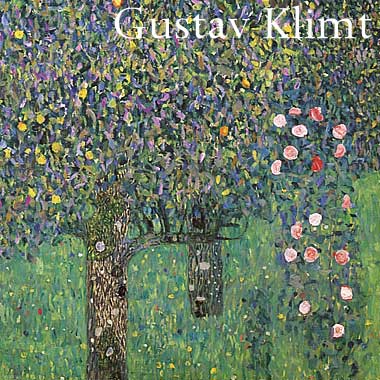Gustav Klimt
landscapes
june 16–september 2, 2002
Biography
Gustav Klimt (1862-1918) was one of the most innovative and controversial artists of the early twentieth century. The son of an engraver, he studied at the State School of Applied Arts in Vienna. In the 1880s and 1890s he produced murals for public buildings -- including Vienna's Burgtheater and new Kunsthistorisches Museum (Art History Museum) -- in the prevailing classical-realist style. Klimt's style grew increasingly experimental, however, and his murals for Vienna University, commissioned by the State in 1894, were roundly attacked by critics for their fantastical imagery and their bold, decorative style. Partly in response to this reaction, in 1897 Klimt helped form the Secession, a group of artists dedicated to challenging the conservative Academy of Fine Arts. Influenced by European avant-garde movements represented in the annual Secession exhibitions, Klimt's mature style combined richly decorative surface patterning with complex symbolism and allegory, often with overtly erotic content.
After 1900 he concentrated on portraits and landscapes, although he also produced two of his greatest murals during this period -- The Beethoven Frieze, exhibited at the Secession in 1902, and decorations for the Palais Stoclet in Brussels (1904-1911). Klimt spent most of his summers on the Attersee, near Salzburg, where he drew inspiration for many of his landscapes, and where he painted some of his best-known works, including The Kiss of 1907-8.
Gustav Klimt in a rowboat on the Attersee, c. 1910 Austrian Archives/Christian Brandstätter, Vienna

Gustav Klimt Landscapes
Edited by Stephan Koja
With essays by Christian Huemer, Stephan Koja, Peter Peer, Verena Perlhefter, Carl Schorske, Erhard Stöbe, and Anselm Wagner
$65.00 Hardcover
$35.00 Softcover
While the Austrian painter Gustav Klimt is largely revered for his opulent, symbol-laden portraits of the Viennese bourgeoisie, these works were just one aspect of his artistic expression. Klimt's landscapes represent an important facet of his career and are a valuable contribution to the school of European nature painting. For many years the artist traveled to the Austrian and Italian countryside during the summer, where he took advantage of the extraordinary light and spectacular hues. Among the most exquisite of Klimt's landscapes are those in which he experimented with composition and style; many of them reveal the influence of his contemporaries. Accompanied by essays from scholars, this visually stunning collection of all of Klimt's landscape paintings and drawings brings to light a little-known aspect of the artist's oeuvre, proving that his mastery extends beyond portraiture and revealing themes that appeared throughout his life's work.
220 pages, 9 1/2 x 11 3/4 inches
80 color and 150 black-and-white illustrations
2002
Published in association with Prestel
ISBN 3-7913-2677-5 (hardcover)
ISBN 0-931102-48-0 (softcover)

